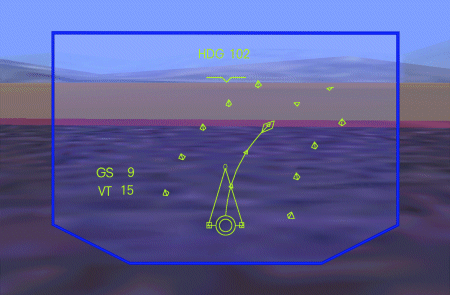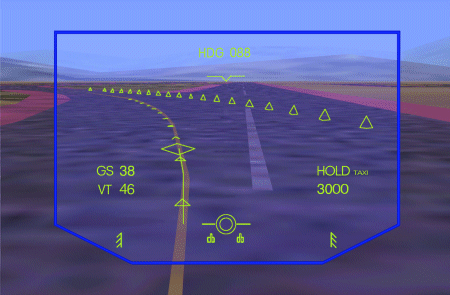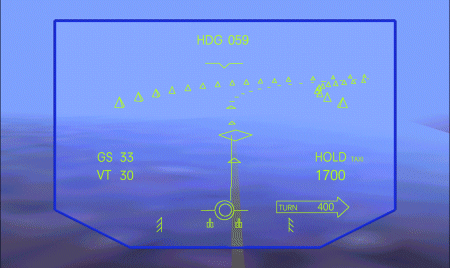Technology promises to make it easier to navigate busy, unfamiliar airports in low visibility while avoiding other traffic
Chris Kjelgaard/WASHINGTON DC
Although at an early stage, efforts to combat the USA's growing runway incursion problem may be gathering momentum.

Identified by the US National Transportation Safety Board as the most important safety problem facing the US air transport system, runway incursions have increased throughout the 1990s as airports have become busier. More aircraft and ground vehicles are being squeezed into what are already by far the busiest airports in the world and US safety professionals admit the national airport system is creaking.
In close co-operation and co-ordination with the Federal Aviation Administration, NASA is bringing its research resources to bear on the problem - with some success.
Demonstrated to airlines at Dallas/Fort Worth, Texas, last month, NASA's Runway Incursion Prevention System (RIPs) marries technologies developed for the FAA's runway incursion reduction programme (RIRP) - including the airport movement area safety system (AMASS) - with global positioning system (GPS) data, automatic dependent surveillance-broadcast (ADS-B), datalinks, airport moving maps and incursion algorithms.
For the demonstration, information produced by this blend of technologies is processed and presented to the pilot on head-up and head-down displays on the flightdeck of NASA's Boeing 757 research aircraft. What pilots see on the displays are visual alerts of traffic on or near the runway. In addition, they receive aural alerts of potential incursion threats and definite incursion conflicts.
They are also provided with surface guidance cues for use in low visibility. The head-down navigation display presents a moving map of the airport, as viewed from above, indicating the cleared taxi route. The head-up display presents a complex blend of cues, including computer-generated cones marking the runway or taxiway edges; centreline markings; speed and deceleration cues; distance and direction indications for turns; as well as visual cues for runway/taxiway intersections and hold points.
The controller has not been forgotten. NASA has funded the University of Ohio to develop a workstation with a new traffic display tool to keep the controller as informed as the pilot as to what is happening - or could happen - on the airport's runways and taxiways.
NASA's intention was to produce the prototype of a pilot- and controller-friendly runway incursion prevention system that it hopes - and is beginning to believe - will become a standard flightdeck feature.
But there is more. RIPS forms one of three main elements of NASA's Aviation Safety Programme, headed by the agency's Langley Research Center in Virginia. Also part of the programme is the Synthetic Vision System, a blend of GPS, three-dimensional terrain databases and advanced sensors intended to provide pilots with what NASA claims will be "revolutionary" situational awareness.
The third element is the agency's Hold Short Advisory Landing Technology (HSALT), a guidance system for use when the controller asks the pilot to land and stop before a specific runway intersection. Upon receipt of a land and hold short instruction, HSALT would provide visual cues to help the pilot decide quickly whether he can stop the aircraft in time to accomplish the requested procedure.
HSALT would keep working after touchdown, providing information to help the pilot stop the aircraft safely before the approved hold-short location.
The system works by integrating aircraft performance data with information on runway winds and weather provided automatically by the airport. HSALT then displays on the HUD where the aircraft is likely to stop and if this is where the controller requires it to stop.
On 30 October, NASA completed five weeks of intensive - and, it says, successful - testing at D/FW of the three systems. Denise Jones, NASA's principal investigator for RIPS, says that, although it is too early to say definitively what the collected data will show, "in general it proved feasible to do on-board alerting for the pilot" of runway incursion threats.
Jones says the system receives visual runway hold bar cues produced by the AMASS via datalink, as well as GPS position information broadcast by aircraft and vehicles via ADS-B and the traffic information system-broadcast (TIS-B). The latter data comes from the FAA's ASDE-3 surface-movement radar and the airport traffic identification system (ATIDS) now under development. ATIDS uses a technique known as multi-lateration to locate other aircraft accurately on an airport by monitoring their transponder responses.
NASA feeds the ADS-B, TIS-B and other data to the 757's on-board processors using no fewer than four datalinks. One is the Mitre-developed UAT(universal access transceiver) datalink, which NASA uses to broadcast TIS-B radar position information. Mode S 1,090MHz datalinking is used for ADS-B information and VHF controller-pilot datalink communications (CPDLC) for text messaging. The VHF Mode 2 datalink is used to provide local area augmentation system (LAAS) signals to the aircraft to correct GPS position errors.
Once the information is collected and synthesised, NASA uses three different and separately developed algorithms to process the data for display on the HUD. Jones says two of the algorithms are held on-board the aircraft, while the third - an incursion-alerting function developed for the AMASS - is broadcast from the ground to the flightdeck.
The simpler of the two on-board algorithms was developed by NASA and provides a single position for each ground target. The more complex algorithm is a two-stage alerting function developed by Alexandria, Virginia-based Rannoch.
The Rannoch algorithm provides pilots of aircraft approaching runways from the air, or on the ground, with an initial 'runway traffic alert' to let them know that other aircraft are either on the runway or show intent to move on to the runway. Within certain distance and time parameters, particularly for aircraft on final approach, the algorithm activates a second-stage severe 'runway conflict' warning of traffic on the runway.
Although the Aviation Safety Programme is still in its early days, Jones says NASA intends to integrate the RIPS head-up and head-down displays within its synthetic vision concept.
A critical factor in the programme's success, she says, will be development of standardised digital airport surface databases. To this end, NASA is working with RTCA in the USA and EuroCAE in Europe to develop certification standards for terrain databases.
It is not yet clear how the FAA will integrate its RIRP runway incursion reduction effort with NASA's parallel (but separate and technologically more advanced) RIPS research and development initiative.
FAA Administrator Jane Garvey and Dave Ford, team leader for the FAA's Safe Flight 21 programme, provide perhaps the most shrewd view of how RIPS and RIRP might evolve together. Jointly, they note that the factor which probably concerns the FAA most with regard to runway incursions is cockpit resource management - the human factors issue.
Particularly important to the FAA is the amount of time at a busy airport that pilots will spend with their heads looking down at their instruments to avoid runway incursions rather than looking out of the cockpit windows. The split between looking down and looking out will be of prime importance, say Garvey and Ford - and it is here they believe that NASA's RIPS technology could come into its own.
Transition issue
Industry is already addressing the issue of how to transition the technology into operational use. Rockwell Collins plans a ground demonstration of its surface guidance system (SGS) "with a customer airline" in mid-2001.
"SGS is not a product, it's a technology," says Lawrence Brandt, senior manager with head-up display manufacturer Rockwell Collins Flight Dynamics. The demonstration will "define the features and determine the certification basis", he says, leading to "the first level of certification by late 2002/early 2003".
The company's HGS-4000 head-up display is to be certificated soon to provide runway roll-out guidance, and the first level of SGS capability to be approved is expected to be turn-off guidance. This is scheduled to be followed by taxi guidance in late 2003, traffic awareness and enhanced vision in 2004 and, in late 2006, CPDLC, which will allow taxi clearances and instructions to be received via datalink and displayed automatically.




Design goals for SGS include ensuring the system is retrofittable into existing cockpits and that it provides economic benefit to users while not requiring significant airport infrastructure changes. "We will have to have extremely accurate airport databases and accurate navigation," Brandt says. The positioning accuracy needed for surface guidance, better than 1m (3ft), will require use of differential GPS. ADS-B for traffic awareness and CPDLC for taxi clearances are "longer term options", he says.
Additional reporting by Graham Warwick.
Source: Flight International























